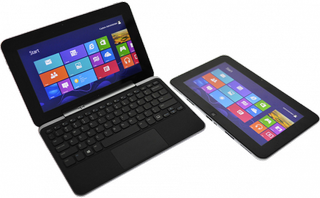Snapdragon S4 Pro: Krait And Adreno 320, Benchmarked
S4 Pro Puts Qualcomm Back In The Fight

Qualcomm's Snapdragon S4 Pro platform is backed by big improvements in CPU and graphics performance, arming the company with the numbers it needs to go up against the current heavy-hitters employing Cortex-A9-based SoCs.
As the technology world works, however, more competition is headed Qualcomm's way. Nvidia's next-generation Tegra and TI's OMAP 5430 are both expected soon. Both will employ Cortex-A15 cores and, we are certain, substantially better graphics performance.
Qualcomm faces a few challenges moving forward. The first is a lack of games able to showcase the strengths of its Adreno architecture. In comparison, Nvidia's storied history with ISVs has already proven quite fruitful for the company's mobile efforts. Today, there are several Tegra-optimized games (like RipTide and Shadowgun). Further, titles like Sonic the Hedgehog 4: Episode II enjoy an early release on Tegra platforms compared to the rest of the Android ecosystem.
It'd be easy for PC enthusiasts to dismiss the value of titles written specifically for smartphones and tablets. However, they're very important to hardware vendors trying to demonstrate what a graphics processor can do. For example, Apple uses Epic's Infinity Blade series to evangelize what its iPads can do. As we all know, manufacturers need software to justify ever more powerful hardware.
Qualcomm's second obstacle is that S4 Pro-based devices may show up later to the party than the company would have liked. The APQ8064 in our mobile development platform is a very attractive SoC sporting the new Krait CPU architecture, Adreno 320 graphics, and Wi-Fi connectivity. But without an integrated cellular modem, the chip has to be complemented by another piece of silicon in smartphone designs. This almost certainly has ramifications for power consumption.
Its MSM8960T is where we'll see copious integration translate to a better balance between performance and power (for several reasons). Phones based on the SoC still haven't landed, though. And it remains to be seen how much of a head-start Qualcomm might enjoy with its Snapdragon S4 Pro platform compared to upcoming solutions from Nvidia and TI.
More near-term, we have no problem waiting for retail S4 Pro-based tablet or smartphone hardware, which is faster than anything else we've used in those segments. Based on the roadmaps we've seen, it'll be 2013 before Qualcomm is challenged. We only hope the company uses that time to court ISVs able to properly utilize its promising Adreno 320 graphics engine.
Stay on the Cutting Edge
Join the experts who read Tom's Hardware for the inside track on enthusiast PC tech news — and have for over 25 years. We'll send breaking news and in-depth reviews of CPUs, GPUs, AI, maker hardware and more straight to your inbox.
Current page: S4 Pro Puts Qualcomm Back In The Fight
Prev Page Graphics Performance: Adreno 320 Under GLBenchmark 2.1 And 2.5-
shotgunz Naw, more like give foxconn workers better salary, do something good with mountain of money they have, stop patent trolling, stop silly war with google/samsung and stop lieing. Then maybe Apple will be forgiven.Reply -
luciferano shotgunzNaw, more like give foxconn workers better salary, do something good with mountain of money they have, stop patent trolling, stop silly war with google/samsung and stop lieing. Then maybe Apple will be forgiven.Reply
Well, it'd be a start. I wouldn't go nearly as far as all is forgiven. -
mayankleoboy1 AFAIUI, the PowerVR GPU in ipad3 is more of a brute force architecture. "Just throw more transistors" is its mantra. So its good in current workloads.Reply
The Adreno320 is more refined and optimised arch. Trying to get the most performance from least silicon area. It is still being refined. Hence, it will do well in future applications. -
Why the ST-ericsson 8500 isn't in this list either? too few phone out? Xperia S/P... looks it would rock some of concurrents.. omap..S3...Reply
Please be as exaustive as possible ;) -
Error in the chart on second page.Reply
The cortex A15 DMIPS/MHz should read above the A9. Around 3.5 DMIPS/MHz from the rumblings. -
These krait numbers aren't very impressive if you normalize for clockspeeds.Reply
In fact, they seem to suggest only a very small improvement over A9, if any at all.
Most Popular

